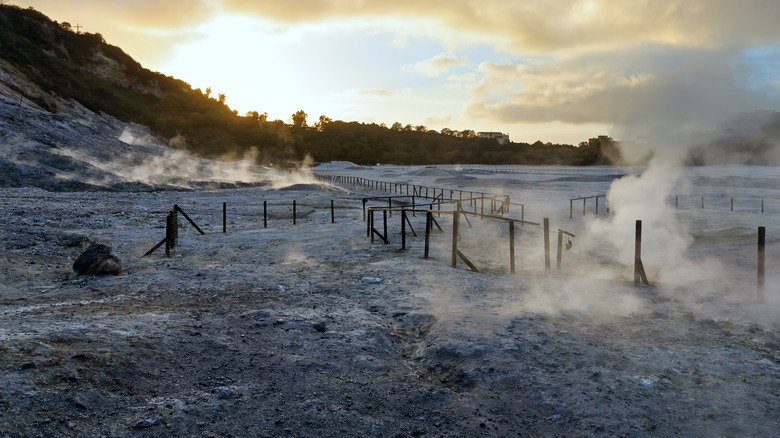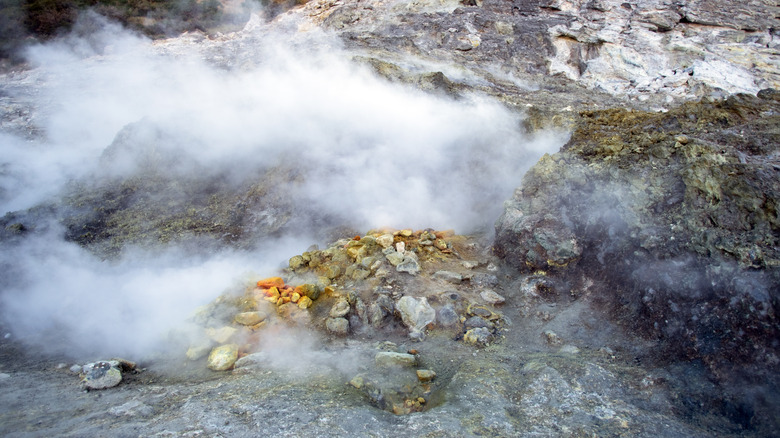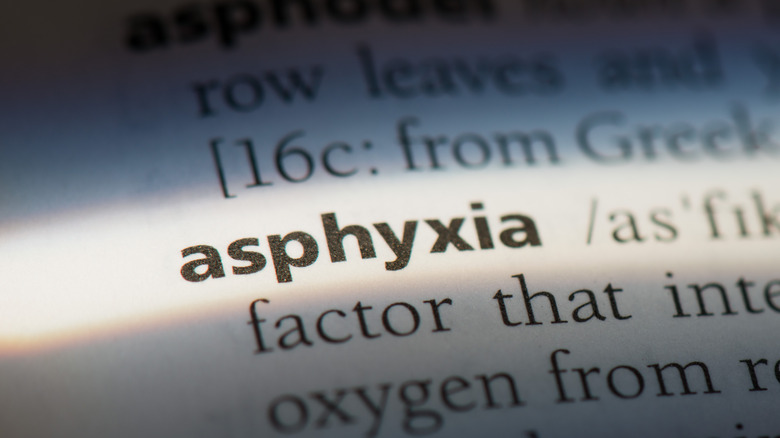The Tragic Accident At A Naples Volcano That Led To The Deaths Of Several Family Members
Eos reports that the Solfatara crater, located close to Mount Vesuvius, is a force to be reckoned with. Per the BBC, Solfatara is technically dormant, as it has not erupted since 1198. Even so, scientists have noted that the crater's volcanic activity has increased dramatically in recent years — so much so that they believe it's only a matter of time before it erupts. (Eos cites "intense volcanic activity, which many scientists view as a serious potential threat.") A study published on Frontier reveals that Solfatara releases several tons of carbon dioxide and water through its vents every day. Despite this, it's been a popular tourist destination in Pozzuoli since 1900 (via Reid's Italy).
Solfatara is in Campi Flegrei, near Naples, next to 40 other volcanoes (via The Guardian). Solfatara's website states that tourists can expect to appreciate the beauty and nature of the volcano's landscape. Camping is also available. However, Reid's Italy writes that steaming mud pits and fumaroles (holes that emit volcanic gasses) are the norm here. In 2017, Solfatara made headlines when Italian officials announced that three people on vacation had died while visiting Solfatara (per Reuters). Their deaths occurred close to a large fumarole known as the Bocca Grande. The victims were a 45-year-old man, a 42-year-old woman, and their 11-year-old son.
One person survived the tragedy
The BBC states that the family was visiting from Meolo, a town near Venice, Italy. The parents were identified as Massimiliano Carrer and Tiziana Zaramella, and their son as Lorenzo. According to CBS News, the incident began when their young son wandered off into an area that was prohibited. It's thought that the child then fell into a crater as he passed out from the toxic volcanic fumes (per USA Today). His parents attempted to save him, only to fall into the crater themselves. The BBC notes that the area where this occurred is susceptible to collapsing due to a type of quicksand, leading to ground that crumbles easily.
The publication writes that the father went first to rescue the son and fell in. The mother followed suit (via the BBC). Per The Guardian, another child, age 7, was also at the site and witnessed his family falling into the crater. However, he ran to get help and survived the accident. Firefighters recovered all three bodies from the 10-ft crater. Soon after, Luca Cari, spokesman for the national fire brigade, announced what he believed happened. He stated, "Either there was a small explosion, or the ground simply gave way from their weight, and they fell into this hole."
The deaths were caused by asphyxiation
However, CBS News reports that investigators were unsure if the family had died as a result of the crater's boiling mud or from asphyxia. Signs are posted throughout Solfatara to warn visitors of both the 320-degree mud and toxic gasses like hydrogen sulfide (via Reuters), emerging from the fumaroles. However, Reuters states that investigators surmised that asphyxia was likely the cause of death. According to a 2019 report published in Forensic Science International, posted at the National Library of Medicine, an autopsy report later confirmed this assumption. The bodies of the three victims displayed a green tint that proved that they had suffered from cyanosis (a discoloration of the skin caused by a lack of oxygen in the blood) and hemorrhagic pulmonary edema.
Per the National Library of Medicine, each victim suddenly lost consciousness before asphyxiating. The study notes that this was the first reported incident of accidental poisoning caused by volcanic gasses in three different people at the same time. As for the child that survived, witnesses stated that he was inconsolable. Armando Guerriero, a local bar owner, stated, "We tried to calm him down, as he was obviously very shocked. He was repeatedly asking for the rest of his family" (per the BBC). Guerriero added, "In the 40 years that I've worked here, I've never seen anything like it" (via The Guardian).


